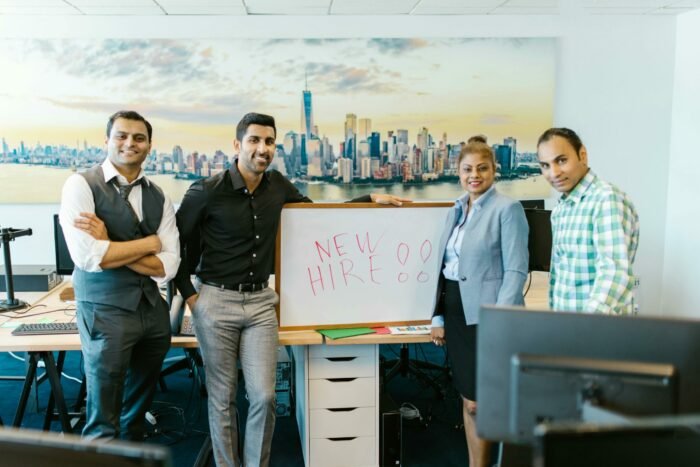A recent survey of U.S. businesses revealed that the average company loses over $5,000 per employee to employee turnover. Many people will tell you that employee retention is the most important factor for any business. This is a big mistake. Employee turnover is a fact of life; the sooner you accept that the sooner you can start planning for it. The good news is that if you manage your employees well, you can reduce turnover and increase employee satisfaction.
For example, a recent American Association of Retired Persons (AARP) study found that more than half of the U.S. workforce will change jobs by 2020. The average employee will spend more than a decade working for the same company. In this post, we’ll look at what is the employee life cycle and how it can be applied to your business.
What is the Employee Life Cycle?
The Employee Life Cycle
The employee life cycle is a model that helps employers understand what motivates employees and how to keep them engaged and productive. It’s an essential tool for H.R. professionals and managers. Every employee goes through a life cycle. The life cycle of an employee is the same as that of a person, with a few minor differences.
When a person is first hired, they start as a new employee. The employee then goes through the probationary period. The employee learns about the company and its culture during the probationary period. It is also where employees get their first opportunity to prove that they can do the job. The employee’s performance during this period will determine whether they are promoted to a different position in the company.
The employee life cycle is a series of events that happens to employees. The first event is the beginning of employment. This is when an employee starts working for a company. The second event is the middle of employment. This is when an employee is in the middle of their career. The last event is the end of a job.
This is when an employee retires from the company. The employee life cycle is not all about work. It also includes personal events—for example, a child’s birth or a family member’s death.
6 Stages of the Employee Life Cycle
“I want my team to do the work of two people and still be happy.” – David Allen.
The employee life cycle is a term used to describe the different stages an employee goes through. It’s a way of understanding how your employees perform and what they need to do to move through the stages.
1. Recruitment
When recruiting new employees, you’ll want to ensure you’re providing them with the best working environment. You’ll want to make sure that you’re making sure that you’re providing them with a culture that they’ll enjoy. You’ll also want to ensure you’re providing them with the right training to perform their jobs effectively.
When you hire someone, you’ll want to ensure you have a clear idea of what you’re looking for. You’ll want to think about what skills and qualities you’re looking for and why you’re hiring that person.
2. Onboarding
Once the employee is in the workplace, you’ll want to ensure you’re helping them develop. You’ll want to allow them to develop the skills they need so that they can become a valuable member of the team. You’ll also want to ensure you’re providing them with the necessary tools and equipment to do the job.
Once you’ve hired someone, it’s time to retain them. You’ll want to make sure you allow them to do their best work and that you’re happy with the work they’re doing.
3. Training
After the employee has been on board for a while, you’ll want to ensure they’re performing well. You’ll want to make sure you’re helping them improve their skills, so they’ll be able to perform their jobs effectively. You’ll also want to ensure they receive the proper training and development.
This is when an employee starts working for a company. They’ll be given the training to help them learn about the company’s processes and procedures.
As your employee progresses through their career, they’ll develop differently. They’ll build their skills and their knowledge base. You’ll want to make sure you support them as they grow.
4. Retention
Once the employee has worked with you for a while, you’ll want to ensure they’re still performing well. You’ll want to ensure you’re helping them develop so they can continue to perform well. You’ll also want to ensure that they’re continuing to receive the proper training to stay relevant.
This is when employees feel they are beginning to grow within their job. They’ll start to feel like they’re making a difference, and they’ll feel more engaged.
5. Promotion
After the employee has worked with you for a while, you’ll want to ensure they’re still performing well. You’ll want to ensure you’re helping them develop so they can continue to perform well. You’ll also want to ensure that they’re continuing to receive the right training to stay relevant.
As your employee develops, you’ll want to promote them. You’ll want to ensure they know they’re doing a good job and that the company values them.
6. Termination
After the employee has worked with you for a while, you’ll want to ensure they’re still performing well. You’ll want to ensure you’re helping them develop so they can continue to perform well. You’ll also want to ensure that they’re continuing to receive the right training to stay relevant.
As your employee reaches retirement age, you’ll want to make sure you support them as they retire. You’ll want to make sure they’re comfortable and can do the things they love.
Why Employee Life Cycle Matters?
“I’m not trying to make my employees happy. I’m trying to make them successful.” – Gary Keller.
In a few short years, today’s workforce will be a different breed than the one that exists today. Many employees will have been employed in an organization for their entire career, but they may not have been at the same company for the whole of that time.
If you’re like most organizations, you’ve likely had to make some changes over the past decade to adapt to the changing business environment and meet the marketplace’s demands. These changes can be disruptive, often leading to employee turnover.
According to the U.S. Bureau of Labor Statistics, there were 2.53 million job openings in February 2014 compared to 3.28 million in October 2013, and there were 4.88 million unemployed workers in February 2014 compared to 5.04 million in October.
The reason why having a longer employee life cycle matters is that it helps to retain your best employees:
- Employees with a longer life cycle are more likely to be loyal to their company. They will work hard and do their best for the company. If you don’t have a long employee life cycle, you will have difficulty retaining your best employees.
- Longer employee life cycles also mean you’re more likely to find passionate employees about the company they work for.
- The employee life cycle is critical in determining whether or not your business will succeed. It can make all the difference between being successful and failing.
You should always make sure that you have an excellent employee life cycle. You can start by following these steps:
1. Hire right
When hiring someone new, you should always ensure that you hire the right person for the job. You should never hire just anyone who has applied for the job.
2. Develop them
After you’ve hired someone, it’s time to develop them. You should always take the time to train new employees so that they’re ready to hit the ground running when they start working.
3. Retain them
Once you’ve developed your employees, you should always make sure that you keep them. If you don’t, you’ll have difficulty retaining your best employees.
4. Let them go
When your employees are no longer needed, you should always make sure that you let them go. It would be best if you never kept an employee who doesn’t fit in with your company’s culture.
How to Build an Employee Life Cycle?
The employee life cycle is a fundamental concept for a company, especially in the current market. If you have not seen it, you might be interested in how to build an employee life cycle.
The employee life cycle is how new employees become loyal to your business. You need to ensure that you build a strong relationship with your employees. This is achieved by creating a positive working environment.
1. New Hires
You’ll need to understand who you want to hire and what they want from their job. You can talk to your current employees and ask them what they think of your company. You can also ask your customers what they think of your company.
2. Create a vision statement
Once you’ve identified your target audience, you’ll need to create a vision statement for your company. You can make a vision statement to inspire your employees. It should be something that you can live by.
3. Set goals
Once you’ve created your vision statement, you’ll need to set goals for your business. You’ll want to set achievable goals. You can do this by setting milestones.
4. Promote
You’ll want to promote your company to your employees. You can do this by providing training for your employees. You can also give them a sense of belonging by ensuring they feel like they’re a part of the company.
5. Engage
You’ll want to engage your employees by giving them responsibility. This means that you’ll want to give them a task that they can complete. It will help them to feel more engaged with your company.
6. Motivate
You’ll want to motivate your employees by giving them a sense of purpose. You can do this by giving them a reason to get out of bed in the morning.
7. Recognize
You’ll want to recognize your employees by rewarding them. You can do this by providing them with a token of appreciation.
8. Retain
You’ll want to retain your employees by allowing them to grow their skills. You can do this by giving them a chance to learn new things.
9. Reward
You’ll want to reward your employees by giving them a sense of belonging. You can do this by making sure they’re included in decision-making processes.
10. Celebrate
You’ll want to celebrate your employees by ensuring they have a sense of belonging. You can do this by giving them a day off.
Employee Life Cycle vs Employee Development
1. Employee life cycle is a term used to describe the stages employees go through as they move from being entry-level workers to a more senior position. Employee development refers to how an organization develops employees throughout their careers.
2. In an employee life cycle, employees work for one company for a long time, often decades. During this period of time, the company invests a lot of money in their training and development. As they get older, they move into management. However, in an employee development model, employees work for several companies over a period of time. As they move through the different career stages, they gain experience at each company.
3. Employee life cycle refers to the time a company employs an employee. Employee development refers to the improvement and development of an employee throughout their employment with a company.
4. Employee life cycle is a stage where employees work for an organization for a fixed period. Employee development is a stage where employees learn new skills and develop themselves to become more productive and valuable to the organization.
![What is the Employee Life Cycle? [10+ Reasons Why It Matters] 1 What is the employee life cycle](https://zoets.b-cdn.net/wp-content/uploads/2022/12/What-is-the-employee-life-cycle-e1672319611215.png)
![What is the Employee Life Cycle? [10+ Reasons Why It Matters] 2 Employee Life Cycle](https://zoets.b-cdn.net/wp-content/uploads/2022/12/Employee-Life-Cycle-1024x683.jpg)
![What is the Employee Life Cycle? [10+ Reasons Why It Matters] 3 How to Build an Employee Life Cycle](https://zoets.b-cdn.net/wp-content/uploads/2022/12/How-to-Build-an-Employee-Life-Cycle-1024x683.jpg)








